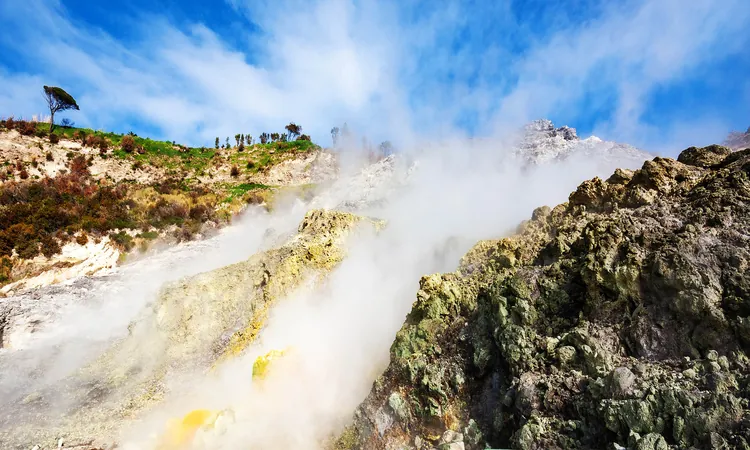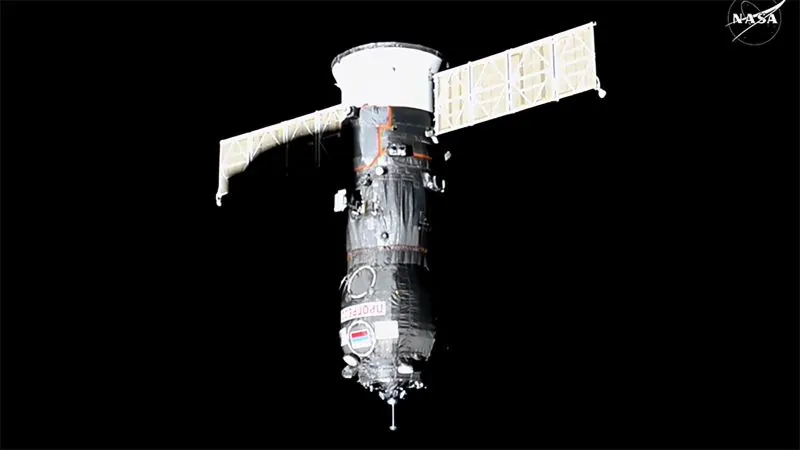
The Alarm Is Sounding: Is the Supervolcano Near Naples Bracing for Eruption?
2024-11-28
Author: Lok
The Alarm Is Sounding: Is the Supervolcano Near Naples Bracing for Eruption?
The Phlegraean Fields, a massive supervolcano located just west of Naples, Italy, are displaying unsettling signs of awakening, raising alarms among experts in the geological community.
Key Findings from the Research
Gianmarco Buono, a prominent volcanologist at the Italian National Institute of Geophysics and Volcanology (INGV), is overseeing a critical study to unravel the reasons behind this uptick in gas emissions. He stresses the importance of identifying the source of carbon dioxide to accurately analyze the activities within the magmatic and hydrothermal systems of the volcano.
His team is working on innovative methods to differentiate between carbon dioxide originating from magma and that released through various other geological processes. Such a technique has broader implications, as it could enhance volcanic monitoring efforts worldwide.
What Defines a Supervolcano?
Simply put, a supervolcano stands out as a colossal volcanic system capable of producing eruptions significantly more powerful than typical volcanoes. Eruptions from supervolcanoes can eject over 1,000 cubic kilometers of volcanic materials into the atmosphere, resulting in catastrophic climate effects on a global scale. Notable examples of supervolcanoes include Yellowstone in the United States and Toba in Indonesia.
A supervolcano's explosive potential often leads to the formation of a caldera, a vast crater that can cover extensive areas. Although such eruptions are rare, they hold the potential for widespread devastation, attracting vigilant observation from scientists focused on understanding their intricate workings.
The Numbers Behind the Eruptions
Currently, the Solfatara crater is emitting between 4,000 and 5,000 tons of carbon dioxide daily. To put this into perspective, these emissions mirror the combustion of around 500,000 gallons of gasoline each day. Recent studies indicate that 20% to 40% of the carbon dioxide emissions stem from the dissolution of calcite in the surrounding rocks, with the remaining majority linked to underground magma shifts.
As Buono explains, when magma approaches the Earth's surface, reduced pressure allows trapped gases—including carbon dioxide—to escape. Regular monitoring includes analyzing gas emissions through fumaroles, assessing earthquake frequency, and tracking ground deformation, all essential indicators of potential volcanic activity. However, not every increase in gas emission leads to an imminent eruption; sometimes, carbon dioxide is released from hot fluids interacting with overlying rocks rather than direct magma movement.
A Long History of Volcanic Activity
The Phlegraean Fields have been active for approximately 40,000 years, with the most recent eruption occurring in 1538. Since the 1950s, various phases of unrest have reminded us of the dynamic nature of Earth's geology. Increased seismic activity and ground deformation have been observed, hinting at the circulation of hot fluids beneath the surface that can react with calcite to produce further carbon dioxide.
Researchers have made sense of emissions over the decades, initially estimating that gases predominantly originated from deep magma sources. However, the data began showing deviations from expected signs in 2005, coinciding with the alarming rise in ground temperatures.
Why This Matters
Understanding the origins of carbon dioxide emissions from volcanic systems is critical for public safety and environmental awareness. By accurately distinguishing between magmatic and non-magmatic emissions, scientists can better predict volcanic activities and mitigate risks. Buono's research not only illuminates the complexities of the Phlegraean Fields but also lays groundwork for similar studies in other volcanic regions.
The implications of these findings extend beyond mere academic interest; they hold profound significance for the safety of the millions living near such geological giants. With events like the Pompeii eruption in mind, the need for ongoing research and monitoring is paramount.
Looking to the Future
With the Phlegraean Fields aware of their potential threats, scientists like Buono remain committed to deciphering the secrets below the surface. As they unravel these mysteries, they also work diligently to provide actionable insights to ensure the safety of nearby populations.
In a world where natural disasters can rapidly turn into crises, understanding our planet's active volcanoes is not just a scientific endeavor but a vital necessity. The Phlegraean Fields serve as a potent reminder that the Earth is a living, breathing entity constantly undergoing change, and vigilance could mean the difference between disaster and safety.
For those interested in the latest developments in geological research, keep a close watch on the Phlegraean Fields—what goes on beneath may impact more than just the immediate vicinity!



 Brasil (PT)
Brasil (PT)
 Canada (EN)
Canada (EN)
 Chile (ES)
Chile (ES)
 España (ES)
España (ES)
 France (FR)
France (FR)
 Hong Kong (EN)
Hong Kong (EN)
 Italia (IT)
Italia (IT)
 日本 (JA)
日本 (JA)
 Magyarország (HU)
Magyarország (HU)
 Norge (NO)
Norge (NO)
 Polska (PL)
Polska (PL)
 Schweiz (DE)
Schweiz (DE)
 Singapore (EN)
Singapore (EN)
 Sverige (SV)
Sverige (SV)
 Suomi (FI)
Suomi (FI)
 Türkiye (TR)
Türkiye (TR)